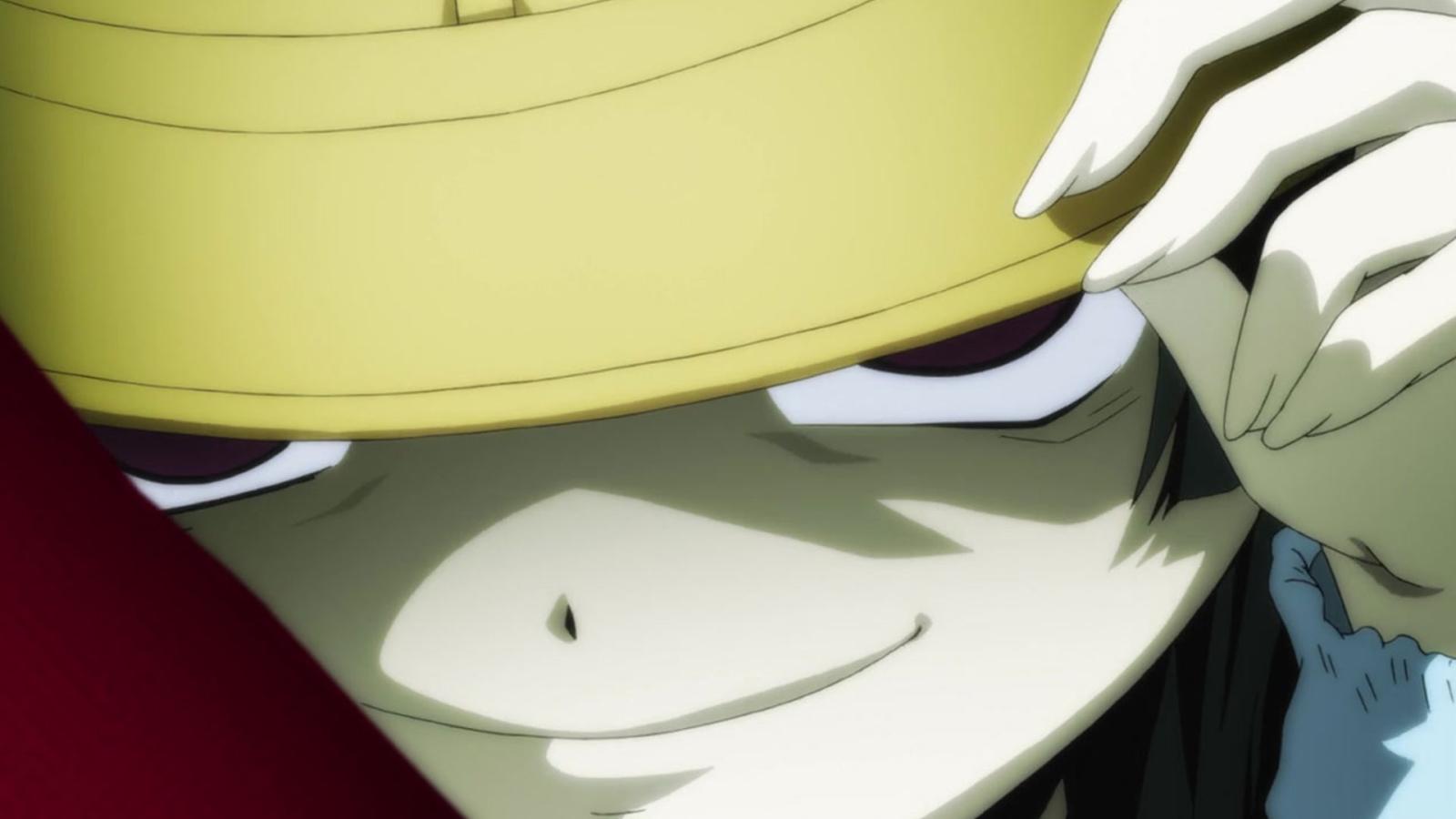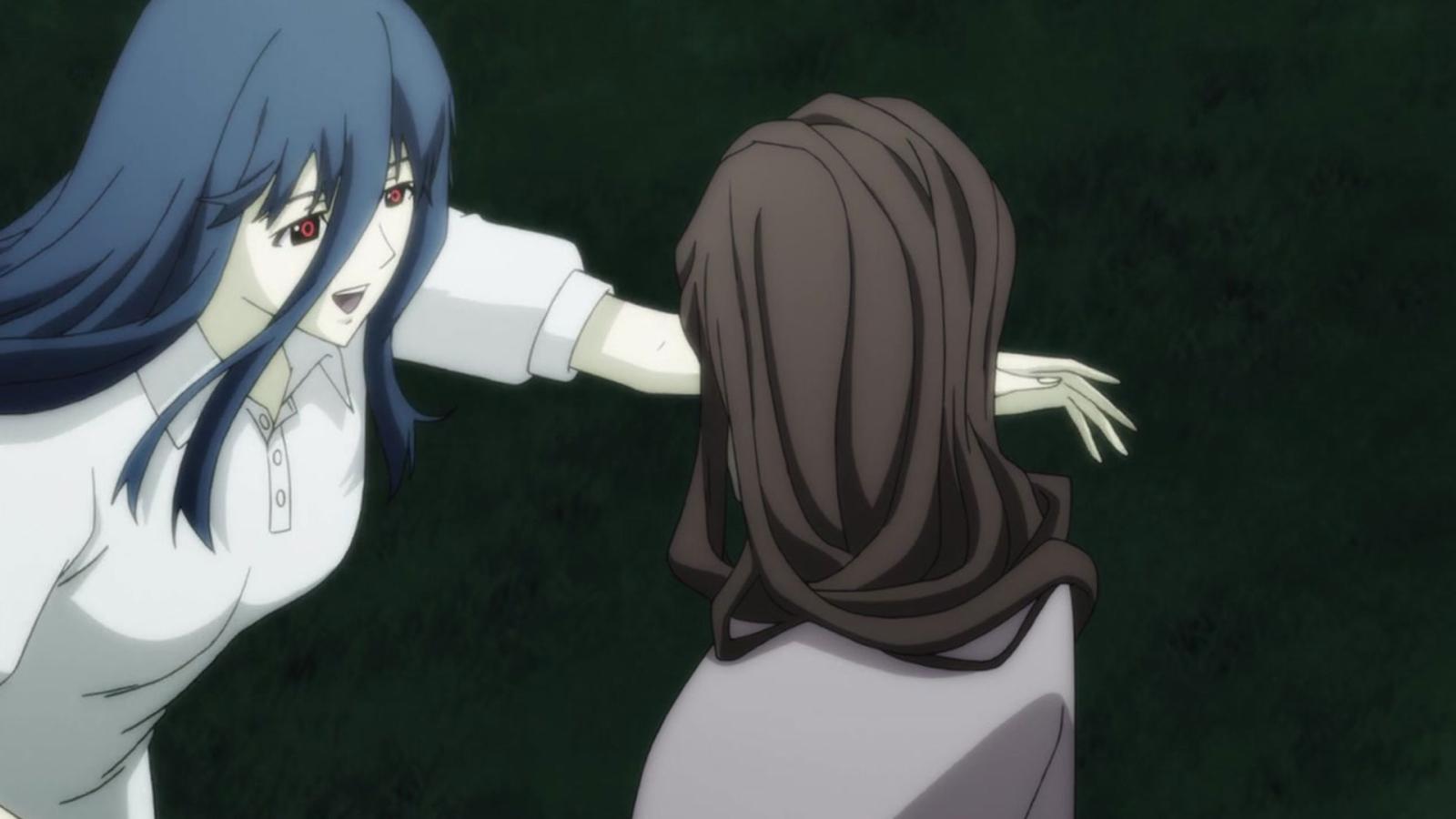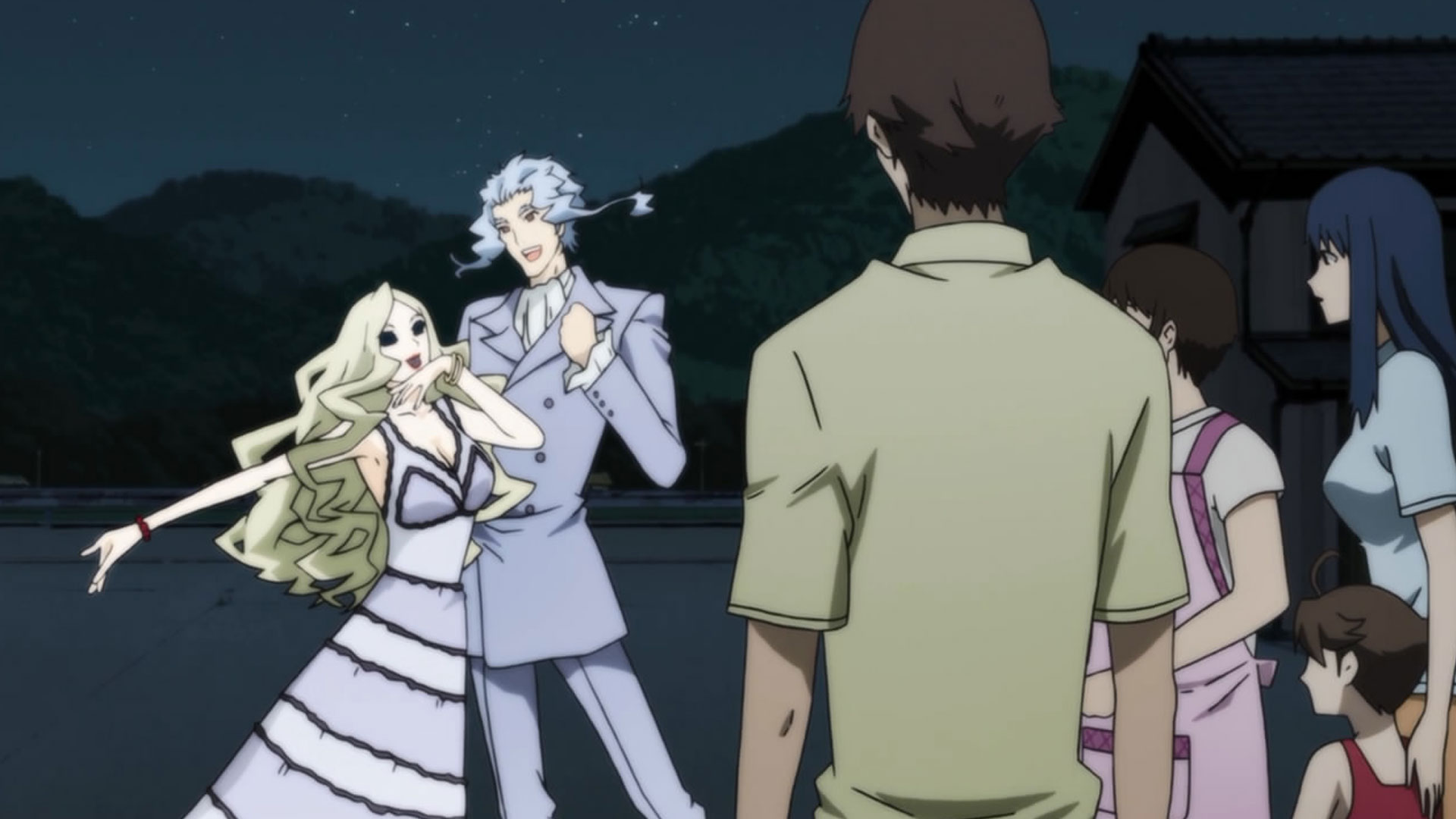Shiki starts with only a little blood and ends with a lot of it, and you cannot help but wonder… did they just try to compare humans to vampires?
Shiki is a horror, a rather bloody one, which makes sense with vampires being involved. Surprisingly, however, vampires spill relatively little blood; it is the humans that walk around in blooded clothes by the end, and that blood is not theirs.
We will spoil Shiki in this one; make sure to watch the series and then come back to rant together with us about how ridiculous that comparison is.
Now, don’t get us wrong, Shiki is an interesting horror mystery. It has creepy girls and spooky monsters, and it has a good detective component. It is just that it tries to evoke empathy where there is no need for that.

In the anime, there is an important, if not central, idea that is repeatedly stated by Sunako, the vampire girl, and Seishin, the young priest at the village, and it is simply that death is terrible. All death, they claim, is horrible, be the dying person young or old, poor or rich, and so on. Seishin actually seems to think that killing a predator is wrong. Death is just too horrible to subject anyone to, at least from that perspective.
It is a nice thought in theory, but in the anime’s practice, there is a major issue with this philosophy. The victims of shiki do not die; they are murdered, and the people killing shiki do not just murder; they do it in self-defense.
Shiki is the word used for vampires in the anime. A group of several shiki arrived at a small village called Sotoba explicitly with the goal of murdering everyone in it and turning the place into a literal village of the dead. They were organized, they planned their actions, and they intended to murder people.
Here, an important issue is that not everyone turns into shiki after being bitten. People are murdered by shiki over the course of roughly four days; then, depending on the person’s qualities they might rise from the dead or not. In other words, killing a person might result in a shiki or not; some of the murdered will simply remain dead. It is not a gift of eternal life from the shiki; it is a lottery, and one that is forced upon the living.
It is also worth noting that the people who are bitten do not have to die. If shiki leave them alone for a couple days, they will recover and be able to take another bite again. It seems, in general, that the most suitable solution for shiki-human peace is to control the shiki population and arrange for blood donation services to make everything consensual and respectful for everyone involved.

However, the mastermind behind the shiki invasion, who seems to be Sunako, doesn’t want to control the shiki population; she wants it to grow. She and her underlings deliberately force shiki to kill people even when they resist. They use scare tactics and force their victims, who have turned into shiki, to kill.
To be fair, the series also highlights the power of hunger. It is difficult to resist, and shiki clearly suffer from it. But the series also shows shiki drinking blood from a glass. Existing shiki seem to have an obsession with making new “recruits” kill people. Possibly, it is because of their own guilt, but it is despicable either way. It is one thing for a little girl, who does not even understand what has happened to her, to hurt people because she is hungry. It is another thing for a centuries-old being to force people – or shiki, if you like – to go after their own families, even if they don’t want to kill.
Shiki are like humans. They fear, they hate, they love. Many of them don’t want to kill, and in the end, the series seems to try and defend them, showing them to be no worse than humans. Humans kill too, right? By the end of the story, humans have murdered almost every shiki in the vicinity. They are shown to be crazed with bloodlust at times, and at times, they are just casual about it. For example, there is a dinner scene, where blood-covered people share a meal with seemingly zero remorse. Even though moments ago they were killing and throwing away corpses of creatures that are essentially like them and can feel, love, and scream for mercy.
This comparison could work out in a different story. They could have made shiki thirst impossible to resist, so that shiki were just trying to survive, and it could work. But the story is that a mastermind, who is many centuries old, has arrived into a small village to spread its curse and force people to kill. That mastermind is in the body of a little girl, which can give one pause, especially since she carefully retains childlike mannerisms. But she is the cause of way too many deaths for her eventual survival to be justified.

